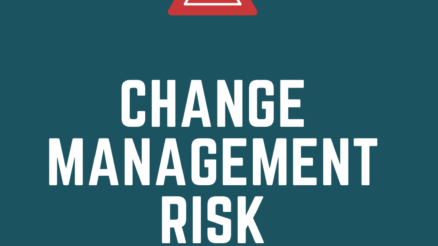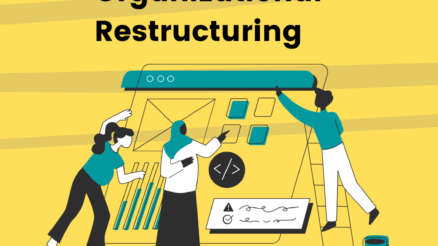Change is an inevitable and essential aspect of any thriving organization.
It propels growth, drives innovation, and enables adaptability in an ever-evolving world.
Embracing change has become a mantra for success, and leaders often champion transformational initiatives to stay ahead of the competition.
However, as organizations navigate the dynamic landscape of change, there is a crucial tipping point that can have dire consequences if overlooked—the point at which change becomes excessive.
When an organization is caught in a whirlwind of constant and relentless change, the positive effects of transformation can quickly turn into chaos and uncertainty.
This blog post explains when it is too much change in an organization and what are its negative consequences and how to find a right balance.
Let’s learn more about this
What is organizational change?
Organizational change refers to the process of making significant alterations to the structure, processes, culture, or strategies of an organization.
It involves transitioning from the current state to a desired future state in order to improve performance, efficiency, and effectiveness.
Organizational change can encompass a wide range of initiatives, such as introducing new technologies, redefining company goals, restructuring departments, adopting new business models, or implementing new management practices.
The need for organizational change often arises from various internal and external factors, such as shifts in market conditions, technological advancements, changes in customer preferences, competitive pressures, mergers and acquisitions, or the need to address internal inefficiencies and challenges.
Implementing organizational change is not a simple task, as it often involves altering long-standing routines, challenging existing mindsets, and managing resistance from employees.
Proper change management strategies are crucial to guide an organization through the transition smoothly, ensuring that the change is well-received and effectively integrated into the organizational culture.
The Positive Aspects of Organizational Change
Following are some positive aspects of organizational change.
Benefits of embracing change in an organization
Embracing change in an organization brings about several key benefits that contribute to its long-term success and growth.
Firstly, change allows organizations to stay relevant and responsive to dynamic market conditions. By proactively adapting to shifts in the industry and consumer preferences, organizations can maintain their competitive edge and avoid becoming stagnant or obsolete.
Embracing change also fosters a culture of continuous improvement, where employees are encouraged to seek better ways of doing things, leading to increased efficiency and productivity.
Moreover, change enables organizations to seize new opportunities and explore untapped markets. By being open to change, businesses can capitalize on emerging trends and innovative technologies that have the potential to drive growth and expansion.
This willingness to embrace change can also improve an organization’s reputation as forward-thinking and customer-centric, attracting both customers and top talent.
How change fosters innovation and creativity
Organizational change creates an environment conducive to innovation and creativity. When traditional processes and methods are challenged, employees are more likely to think outside the box and propose novel solutions to existing problems.
The need to adapt to change often prompts employees to explore different perspectives and experiment with new ideas, leading to breakthrough innovations.
Additionally, when employees are encouraged to participate in the change process, they feel empowered and valued, which further fuels their motivation to contribute creatively.
Furthermore, change can break down silos within an organization, promoting cross-functional collaboration and idea-sharing.
When employees from different departments come together to address change, diverse skill sets and viewpoints are brought to the table, fostering a culture of collective creativity and problem-solving.
Adaptability to market trends and staying ahead of the competition
In today’s fast-paced business landscape, staying ahead of the competition requires a high level of adaptability.
Organizational change allows companies to respond swiftly to market trends, customer demands, and industry disruptions.
By being flexible and open to change, organizations can position themselves to capitalize on emerging opportunities and tackle challenges effectively.
Furthermore, change enables organizations to be proactive rather than reactive. Instead of waiting for the competition to gain an edge, businesses that embrace change can take the lead by introducing innovative products, services, or business models that set them apart in the market.
Employee growth and development through change
Change provides unique opportunities for employee growth and development. When employees are exposed to new challenges and responsibilities during periods of change, they have the chance to acquire new skills, knowledge, and experiences.
This not only enhances their individual capabilities but also makes them more versatile and adaptable to future changes.
Moreover, change can be a catalyst for career advancement. As employees demonstrate their ability to navigate change successfully, they often gain recognition and new career opportunities within the organization.
Change initiatives also offer a chance for employees to take on leadership roles or participate in cross-functional teams, further fostering their professional growth.
How to recognize too much change in an organization?
Too much change” in an organization refers to a situation where the frequency, magnitude, or pace of change initiatives exceeds the organization’s capacity to effectively implement and absorb these transformations.
It is a state in which the rate of change surpasses the organization’s ability to adapt, leading to negative consequences and potential disruptions.
Several factors can contribute to too much change:
- Rapid usccession of changes: When an organization introduces a series of significant changes in quick succession, employees may not have enough time to fully adjust to one change before facing another. This rapid succession can lead to confusion, resistance, and an inability to stabilize and optimize the impact of each change.
- Lack of prioritization: In some cases, organizations may try to address multiple challenges simultaneously, leading to a lack of focus and attention on critical priorities. Without proper prioritization, resources may be spread thin, hindering the successful implementation of any individual change.
- Inadequate change management: If an organization lacks effective change management strategies, it may struggle to provide the necessary support and resources for employees to cope with ongoing changes. Poorly managed changes can result in employee burnout, decreased morale, and decreased productivity.
- Unplanned or reactive changes: In response to external pressures or crises, organizations might engage in constant reactionary changes without a clear strategy or vision. Such ad-hoc changes can lead to a lack of alignment with long-term goals and a sense of instability within the organization.
Understanding the reasons behind too much change in an organization
Excessive change in an organization can stem from a combination of internal and external factors. Internally, certain management styles or organizational cultures may promote a constant need for change without adequately evaluating the necessity or impact of each initiative.
In some cases, leadership may believe that frequent changes automatically lead to progress, inadvertently overlooking the negative consequences of overwhelming employees.
Externally, market dynamics, industry trends, and customer demands can drive the need for continuous change.
Organizations may feel compelled to adapt rapidly to keep up with competitors, respond to disruptive technologies, or meet evolving customer expectations.
While it is essential to be responsive to external factors, it is equally important to critically assess the impact of each change and its alignment with the organization’s long-term vision.
Recognizing the reasons behind constant change requires a comprehensive analysis of both internal and external influences.
By understanding the driving forces behind the need for change, leaders can make informed decisions about the timing and extent of transformational initiatives, ensuring that they are purposeful, sustainable, and beneficial to the organization and its workforce.
Consequences of too much change in an organization
The consequences of excessive change can lead to a decline in organizational performance, reduced profitability, and a damaged reputation both internally and externally.
It is crucial for organizations to strike a balance between embracing change for growth and maintaining stability to ensure sustainable success and the well-being of their employees.
Negative impact on employee morale and motivation
Excessive change in an organization can take a toll on employee morale and motivation. When employees are constantly faced with new challenges and adjustments, they may start to feel overwhelmed and fatigued.
Uncertainty about their roles and the future direction of the organization can lead to feelings of insecurity and anxiety, causing a decline in overall morale.
Moreover, employees may perceive the continuous changes as a lack of stability and direction within the organization. This perception can erode trust in leadership and the company’s vision, leading to a disengaged workforce.
When employees feel demotivated and disengaged, their productivity and commitment to the organization’s goals may suffer, ultimately impacting the overall performance of the organization.
Increased resistance and decreased buy-in from employees
Excessive change often leads to increased resistance from employees. As the frequency of change escalates, employees may become skeptical about the necessity and effectiveness of each new initiative.
They may resist the changes actively or passively, either through overt protests or by simply going through the motions without fully committing to the new processes or strategies.
Resistance to change can hinder the successful implementation of new initiatives, impeding progress and slowing down the organization’s ability to adapt. Moreover, the lack of buy-in from employees can create divisions within the workforce, making it difficult to foster a cohesive and collaborative environment.
Potential loss of skilled employees and talent drain
Employees who are subjected to excessive change without sufficient support or understanding may become disenchanted with their work environment.
This can lead to an increased desire to leave the organization in search of a more stable and supportive workplace. Consequently, excessive change can contribute to a talent drain, resulting in the loss of skilled and experienced employees.
The departure of valuable employees can have significant consequences for an organization, such as increased recruitment and training costs, decreased institutional knowledge, and potential disruptions in workflow and productivity.
Additionally, the loss of skilled employees can lead to a negative perception of the organization among potential candidates, making it harder to attract top talent in the future.
Implications for organizational stability and performance
Organizational stability can be severely compromised by excessive change. Frequent and uncontrolled changes can create an environment of uncertainty, making it difficult for employees to feel secure in their roles and the organization’s future.
This instability can affect team dynamics, communication, and decision-making processes, leading to a decline in overall organizational performance.
Furthermore, the constant upheaval caused by excessive change can disrupt established processes and hinder the development of efficient workflows. This can result in decreased productivity and inefficiencies, ultimately impacting the organization’s ability to deliver products or services effectively.
Finding the Right Balance
By striking the right balance, an organization can reap the benefits of embracing essential change while minimizing the risks and negative effects associated with excessive change. This balanced approach fosters a healthy organizational culture, where employees feel engaged, motivated, and secure, ultimately leading to improved performance, long-term success, and the ability to thrive in an ever-changing world.
Let’s explore some key methods to strike this balance.
Importance of Change Management Strategies
Change management strategies are essential for finding the right balance in implementing organizational change. Change management refers to the structured approach of planning, executing, and monitoring change initiatives to ensure they are successful and well-received by employees.
Without proper change management, even necessary and well-intentioned changes can face resistance and fail to deliver the desired outcomes.
Effective change management strategies help organizations proactively address potential challenges and mitigate the negative impact of change.
These strategies involve identifying stakeholders, understanding their concerns, and tailoring communication and support mechanisms to address their needs during the transition.
By implementing change management strategies, organizations can create a smoother and more controlled change process, minimizing disruption and maximizing the chances of successful adoption.
Conducting a change impact assessment before implementing new changes
Before implementing new changes, organizations should conduct a change impact assessment to evaluate the potential consequences of the proposed initiatives. This assessment involves analyzing how the changes will affect various aspects of the organization, such as employees, processes, resources, and overall performance.
By conducting a change impact assessment, organizations can identify potential risks and benefits associated with the changes. It allows leaders to understand the scope of the transformation, assess the readiness of the organization to handle the changes, and make informed decisions about the timing and extent of the initiatives.
This proactive approach enables organizations to prepare adequate support and resources to address any negative impacts and ensures that employees are well-prepared and equipped to embrace the changes positively.
Involving employees in the decision-making process
Involving employees in the decision-making process is a fundamental aspect of finding the right balance during organizational change. Employees are directly impacted by changes, and including them in the decision-making fosters a sense of ownership and engagement.
Organizations can gather employee input through surveys, focus groups, town hall meetings, or one-on-one discussions to understand their perspectives, concerns, and ideas regarding the proposed changes. By valuing and incorporating employee feedback, leaders can address potential issues and design change initiatives that align with the workforce’s needs and capabilities.
Furthermore, involving employees in decision-making empowers them and enhances their commitment to change. When employees feel heard and respected, they are more likely to support and actively participate in the change process, leading to smoother implementation and higher chances of success.
Setting clear goals and communicating the rationale behind each change
Clear goal-setting and transparent communication are vital for finding the right balance during organizational change. Before implementing any change, organizations should define specific, measurable, achievable, relevant, and time-bound (SMART) goals to provide a clear direction for the change initiative.
When employees understand the rationale behind each change and how it aligns with the organization’s overall vision and objectives, they are more likely to embrace it positively.
Transparent communication about the need for change, the benefits it brings, and how it will impact employees and the organization as a whole builds trust and reduces uncertainty.
Regular and consistent communication throughout the change process is crucial to keep employees informed, address their concerns, and celebrate milestones and successes.
This approach fosters a culture of openness and collaboration, enabling employees to actively support the change and work together towards achieving the set goals.
Final Words
Finding the right balance in organizational change is essential for ensuring sustained success and employee well-being. Embracing change is critical for growth, innovation, and staying competitive, but too much change in an organization can lead to negative consequences such as decreased morale, resistance, talent drain, and organizational instability. Ultimately, striking this equilibrium enables organizations to navigate the dynamic business landscape with agility and effectively drive positive transformation.



